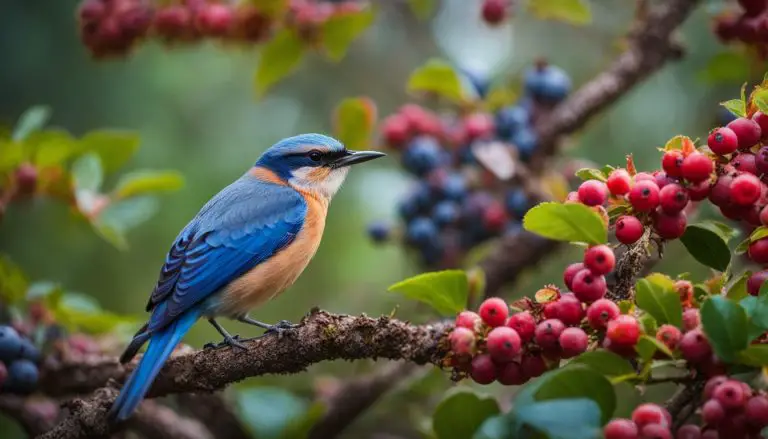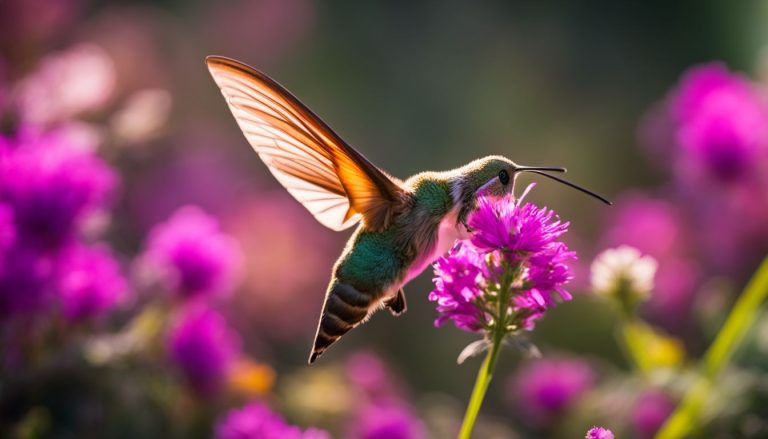
Have you ever taken a moment from your busy day to listen to the rhythmic cooing of a pigeon, and felt curious about the secrets they’re whispering into the world? These feathered city natives, often brushed aside amidst our daily commotion, are masters of a nuanced language that’s uniquely their own.
As someone who’s spent countless hours with binoculars in hand, observing these creatures from park benches and rooftops alike, I can tell you there’s much more depth to what we casually hear as background noise.
Pigeon vocalizations aren’t mere sounds; they embody a sophisticated mode of communication laden with emotion and purpose.
The symphony of soft coos and emphatic wing claps is truly something to behold. They’re not only making noise but expressing their needs and desires—the tender call between mother and chick or the delicate dance of courtship on urban ledges.
Today, I invite you to delve into this topic with me. By understanding the subtleties behind pigeon chatter, we can deepen our appreciation for these ubiquitous yet astonishing avian neighbors.
Who knows? Next time a pigeon graces your balcony railing, you might just comprehend what it’s trying to say—a rewarding connection that bridges our human lives with theirs. So let’s embark on this enlightening voyage through the whispers and songs of pigeon speech!
Key Takeaways
- Pigeons make different sounds like cooing, chirping, clicking, and wing flapping which tell us what they need or feel.
- Rock pigeons and common wood – pigeons have their own special coos. Listening to them helps bird lovers know who is who.
- Baby pigeons buzz and squeal for food while adults might clap their wings for show.
- Tools like field guides, apps, and internet sites help people learn about pigeon noises.
- Pigeon talk changes with age and during things like nesting or when they sense danger.
Understanding Pigeon Vocalizations
Pigeons are known for their distinct cooing sounds, which can vary depending on the species. Rock pigeons and common wood-pigeons have unique vocalizations that birders should be familiar with when identifying these birds in the wild.
Rock Pigeon Sounds
I like listening to the soft cooing of rock pigeons. It’s a happy sound they make, maybe even trying to chat with us humans. Sometimes I hear them in the early morning making louder noises.
This is just one way they talk to each other and let out what they are feeling.
Rock pigeons have more sounds than just cooing. The young ones buzz and squeal, telling their parents what they need. Adult birds flap their wings hard so that it whistles when they fly or show off in the sky with loud claps from their wings.
Each chirp, click, and whistle tells me something about what these birds are up to.
Common Wood-Pigeon Sounds
Common wood-pigeons produce a deep, throaty cooing sound that can carry over long distances. This distinctive call consists of a series of five coos arranged into two parts: “coo-COO-coo.” The first part is deeper and often repeated several times, while the second part is shorter and higher in pitch.
These calls are most commonly heard in the early morning or late afternoon as part of their territorial displays or courtship rituals.
In addition to their classic cooing sounds, common wood-pigeons also emit short, sharp alarm calls when they sense danger nearby. These alarms are characterized by a quick “hu-hu-hu” sound that serves to alert other wood-pigeons and wildlife around them.
Other Sounds
Apart from the familiar cooing, pigeons also produce a variety of other sounds. These include chirping, clicking, and whistling noises. In addition to vocalizations, adult pigeons’ wings make a whistling sound during flight and loud claps in display flights.
Furthermore, grunting sounds and louder noises are common especially in the morning – these additional sounds play an essential role in pigeon communication with each other and potentially with humans as well.
Understanding these diverse vocalizations can give insights into their behavior and needs, particularly for those raising pigeons as pets. By differentiating between these various sounds, individuals can better understand and respond to the needs of these birds.
Similar Species and Identification Help
Comparing pigeon vocalizations with those of similar species can provide valuable insight into identifying different bird calls. Utilizing resources such as field guides and online databases can also help birders distinguish between the sounds of pigeons and other avian species.
Compare with Similar Species
Understanding the nuances of pigeon vocalizations not only fascinates me as a birder but also aids in the accurate identification of these feathered friends. Sometimes, distinguishing between pigeon species by their calls is as crucial as recognizing their plumage. Below, I’ve created a handy comparison of the rock pigeon and the common wood-pigeon, along with a few similar species, to help you discern their unique sounds.
| Species | Vocalizations | Behaviors |
|---|---|---|
| Rock Pigeon (Columba livia) | Soft cooing, grunting in the morning | Whistling wings in flight, loud wing claps during display flights |
| Common Wood-Pigeon (Columba palumbus) | Deep cooing with a display note at the end | Distinctive wing clapping on take-off and landing |
| Mourning Dove (Zenaida macroura) | Soft, mournful cooing | Fast, bullet-like flight, whistling sound from wings |
| Eurasian Collared-Dove (Streptopelia decaocto) | Three-parted cooing ‘coo-COO-coo’ | Less frequent wing clapping, more consistent flight pattern |
Adults and juveniles from these species exhibit different vocal patterns, and recognizing these variations can be incredibly fulfilling when out in the field. Pigeon vocalizations are an integral part of their behavior, conveying needs and emotions. By becoming familiar with these sounds, we deepen our understanding and connection to the avian world.
Utilizing Resources for ID Help
To identify pigeon vocalizations, birders can use various resources such as field guides, birding apps, and online databases. These resources provide descriptions and audio samples of pigeon vocalizations to aid in identification. Field guides are helpful for quick reference in the field, providing detailed information on different pigeon species and their vocalizations. Birding apps offer audio recordings of pigeon vocalizations that can be compared to what is heard in the field, aiding in accurate identification. Online databases provide a wealth of information on pigeon vocalizations, including visual and audio references that allow birders to compare and match the sounds they hear with those available online. Additionally, joining local birding groups or forums can provide opportunities to learn from experienced birders who can offer guidance on identifying pigeon vocalizations through shared experiences and knowledge.
Frequently Asked Questions
– How do pigeon vocalizations differ from other bird species?
– What are the nesting and breeding behaviors of pigeons?
– What are some potential threats to pigeons in urban areas?
Differences in Vocalizations
Pigeons make different sounds depending on their age and behavior. Adults often coo, while juveniles produce buzzing, squealing, and whistling sounds. In addition to cooing, pigeons also chirp, click, and whistle.
Their vocalizations can vary based on their needs and interactions with others.
Understanding these differences is important for interpreting pigeon behavior and needs. Differentiating between the various sounds can help us better respond to their communication cues in both wild and domestic settings.
Nesting and Breeding Behavior
During nesting and breeding seasons, pigeons display specific behaviors. They choose ledges, roofs, or any elevated place to build simple nests out of twigs and debris. Female pigeons lay usually two eggs that both parents take turns incubating for about 18 days.
After hatching, the baby pigeons are fed with a special ‘pigeon milk’ produced in their parents’ crops. The young stay in the nest for around 4 weeks before fledging.
The location of pigeon nests can vary widely – from urban environments like building ledges to rural areas such as trees or cliffs – showing their adaptability. The breeding season for pigeons ranges throughout the year depending on food availability and weather conditions.
Potential Threats to Pigeons
Pigeons face potential threats from predators like hawks, cats, and dogs. In urban areas, pollution and lack of safe roosting places pose dangers to their health and survival. Feral pigeons often struggle with finding suitable food sources in cities, leading to malnutrition.
Furthermore, human activities such as habitat destruction and direct harm can also endanger pigeon populations. It’s vital for birders to be mindful of these threats while observing pigeons in their natural habitats and take steps to advocate for their protection.
Understanding the potential threats to pigeons helps us provide better care for them as birders or individuals who appreciate these birds’ presence in our environment. Being aware of the risks they face allows us to lend support through conservation efforts and creating safer spaces for them within urban settings.
Conclusion
In conclusion, understanding pigeon vocalizations provides valuable insights into their behavior and needs. Different sounds like cooing, chirping, clicking, and whistling convey various messages; even the flapping of their wings produces distinct noises.
By recognizing these vocalizations, birders and pet owners alike can better comprehend and address pigeons’ requirements and interactions. Delving into the world of pigeon language enriches our connection with these urban feathered friends.
I’m Owen Featherstone, your bird-watching buddy and enthusiast of all things feathered! Armed with binoculars and a notebook, I’m on a never-ending quest to uncover the mysteries of our avian friends. Whether it’s deciphering melodies in a dawn chorus or finding out if hummingbirds ever take coffee breaks, I’m here to share the delightful world of birds with you. So grab your virtual wings, and let’s explore the skies together!






